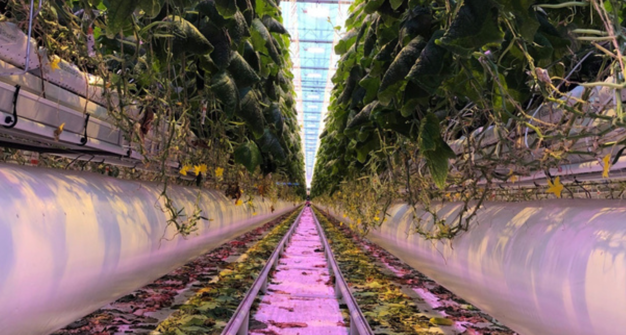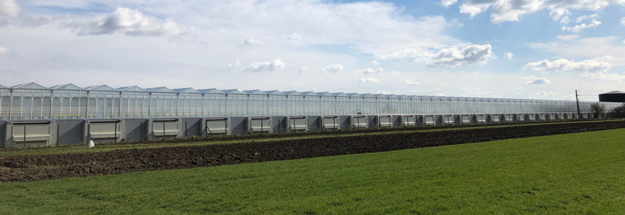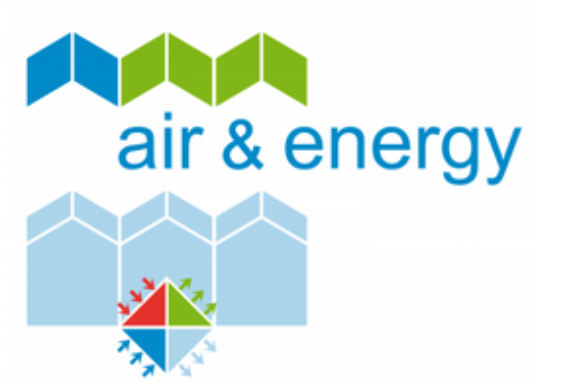Grodan and Signify are taking an important step in sustainable greenhouse horticulture with Ammerlaan Construction's Air & Energy climate control system by growing tomatoes and cucumbers as energy-efficiently as possible. These pioneering trials demonstrate a significant reduction in energy consumption and a remarkable improvement in crop quality.

What is the Air & Energy system?
The Air & Energy climate control system was developed to achieve an optimal growing climate in greenhouses. This system extracts humid air from the greenhouse, thus enabling cultivation with closed vents and screens. This system is unique because it has very low energy consumption and uses an air/air heat exchanger. Why is this important? Because it promises significant energy savings and better growing conditions for crops. The results of the Air & Energy system include increased yields, reduced use of crop protection products, and better CO2 uptake.
Research for more efficient and sustainable cultivation
The tomato trial, undertaken by Grodan and Signify together, was conducted to respond to the volatile energy market and the increasing need for more sustainable cultivation methods for tomatoes. In addition, Kas als Energiebron funded the cucumber trial. Through innovation and cooperation with several leading partners, we aim to optimize the year-round cultivation of tomatoes and cucumbers. This first research started in 2022, and there was a follow-up in 2023 to set up even better handles for energy-efficient greenhouse horticulture.
What is the goal of the tomato trial?
The ultimate goal of the tomato trial is to develop a blueprint that leads growers to greater success in reducing heat inputs. In doing so, the aim is to reduce heat input by more than 40% and focus on increased energy efficiency of the crop.
Key points of the tomato trial
The trial with Ammerlaan Construction's Air & Energy system will test several innovative key points to optimize cultivation. Using a data-driven strategy, where every cultivation decision from light intensity to irrigation timing is based on data analysis, enables precision cultivation, leading to high yields and quality, even at lower energy inputs. In addition, adjusting nitrate and chloride levels directly influences crop growth and openness, which is crucial for maintaining a healthy crop with lower energy use and the right balance with fertilization. Furthermore, controlling transpiration through active dehumidification contributes to optimizing the water and nutrient uptake by the plants even with reduced heat input, which increases overall crop efficiency and productivity.

The research results don't lie
Initial results from the tomato trial show that it is possible to maintain high levels of quality and production even when heat input to the greenhouse is lower. By following a precision cultivation strategy, growers can achieve uniform and consistent results even with a maximum natural gas consumption of only 0.65 m3/m2/week.
This is helped by the use of a growth tube as the primary heating source, with the tube rail being used only based on heat demand and not exceeding 35 degrees. It turns out that gaps with screens are not necessary for moisture and temperature control, the Air & Energy climate control system takes over this regulation.
The main study results show that high-quality, high-volume tomatoes can be grown even with less heat input and that by actively controlling humidity, water and nutrient uptake by the plants remains good even with less heat.
Adjusting the nutrient recipe affects the growth habit of the crop and enables lower energy consumption in the greenhouse, Finally, by choosing nutrients smartly, such as nitrate and chloride, plants grow better without needing extra heat.
What is the purpose of the cucumber trial?
The aim of the cucumber trial, which was recently completed, was to optimize energy efficiency in cucumber cultivation. This involved maximizing cucumber production with minimal use of energy.
A similar trial took place last year with specific targets for energy consumption: no more than 10 cubic meters of gas and 100 kWh of electricity per square meter. This year, researchers continued with this trial, aiming to reduce gas consumption in favor of electricity.
Key points of the cucumber trial
The key points of this trial included the implementation of the Air & Energy climate control system to remove moisture from the greenhouse and provide optimal climate control. By using insulating screens within the greenhouse, heat loss could be prevented, creating a stable and optimal growing environment for the cucumbers. This system sought to overcome the common challenges of heat and moisture loss - and therefore energy loss - in conventional greenhouse growing by balancing the need to keep the plants dry with minimizing energy consumption.
The research results were remarkable: A production increase of about 14 kg more cucumbers per square meter was achieved, compared to last year's cucumber trial, representing a 141% increase in production compared to the previous year. This was achieved with a final energy input of about 6 cubic meters of gas and 140 kWh of electricity per square meter, indicating a significant improvement in energy efficiency. These results highlight the feasibility of more sustainable cultivation methods and provide insights into how advanced technologies can contribute to using less energy per kilo of cucumbers in the greenhouse sector.
 For more information:
For more information:
Ronald Thijssen
Maurice Kassenbouw B.V. / Ammerlaan Construction B.V.
RonaldThijssen@kassenbouw.com
www.kassenbouw.com
